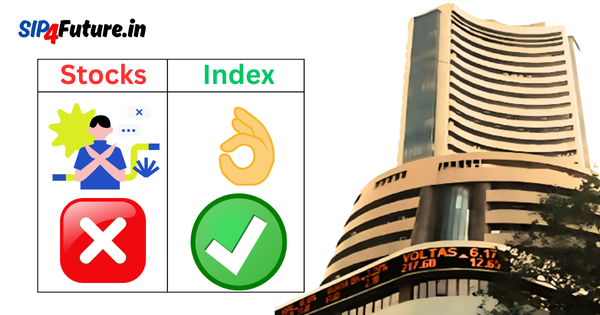Hyundai Motor India Limited (HMIL) has solidified its position as a powerhouse in India’s automotive sector, achieving a monumental milestone of surpassing 9 million domestic sales since its inception in 1996. As of May 1, 2025, HMIL’s stock on the National Stock Exchange (NSE) traded at ₹1707.60, reflecting a positive 1.85% gain. This article delves into HMIL’s remarkable sales growth, stock market performance, the influence of government policies, and the global market dynamics shaping its trajectory. With a focus on Hyundai Motor India, we explore how sectoral trends, strategic expansions, and external factors converge to drive its success.
How Hyundai Motor India Achieved the 9 Million Sales Milestone
HMIL’s journey to 9 million domestic sales underscores its deep-rooted connection with Indian consumers. Since entering the market in 1996, the company has built a robust portfolio, including popular models like the Creta, Venue, and Exter. In April 2025, HMIL reported total sales of 60,774 units, a 21% year-on-year increase from 50,200 units in April 2022. Domestic sales reached 44,374 units, while exports surged to 16,400 units, marking a 21.5% growth in export volumes for the month. From January to April 2025, export growth stood at an impressive 16.2%.
This milestone reflects HMIL’s strategic focus on SUVs, which accounted for 68.5% of its domestic sales in FY25. The Hyundai Creta alone sold 52,898 units in Q4 FY25, reinforcing its status as India’s best-selling midsize SUV. HMIL’s ability to cater to diverse customer segments, from hatchbacks like the Grand i10 NIOS to electric vehicles like the Ioniq 5, has been pivotal. The company’s network of over 1,366 sales points and 1,550 service points across India ensures accessibility, fostering customer loyalty.
What Drives Hyundai Motor India’s Stock Market Performance?
HMIL’s stock performance on the NSE and BSE has been a focal point for investors. On May 1, 2025, the stock closed at ₹1707.60, up 1.85%, with a market capitalization of approximately ₹1,38,750 crore. Despite a 6% decline over the past year, HMIL’s inclusion in key indices like the NIFTY Next 50, NIFTY 100, and S&P BSE 500 highlights its market credibility. Its selection as the only Indian large-cap stock in the MSCI Global Standard Index on February 28, 2025, further underscores its global appeal.
The company’s financials reveal a mixed picture. For FY25, HMIL reported total sales of 7,62,052 units, with 5,98,666 units sold domestically and 1,63,386 units exported. However, Q3 FY25 saw a net profit decline due to market challenges, including softened domestic demand and geopolitical tensions impacting exports. Despite these hurdles, HMIL’s focus on electrified models and its upcoming Talegaon plant, set to commence operations in Q4 2025, signals robust growth potential.
| Financial Snapshot (FY25) | Details |
|---|---|
| Total Sales | 7,62,052 units |
| Domestic Sales | 5,98,666 units |
| Export Sales | 1,63,386 units |
| Market Cap | ₹1,38,750 crore |
| Stock Price (NSE, 01.05.2025) | ₹1707.60 (+1.85%) |
| Promoter Holding | 82.5% |
HMIL’s stock performance is closely tied to its operational efficiency and market positioning. Analysts like those at Moneycontrol note that while FY25 has been challenging, HMIL’s long-term growth prospects remain strong, driven by its SUV dominance and EV strategy.
How Government Policies Shape Hyundai Motor India’s Growth
Government decisions play a critical role in HMIL’s operations and stock performance. India’s push for electric vehicles (EVs) through initiatives like the Faster Adoption and Manufacturing of Electric Vehicles (FAME) scheme aligns with HMIL’s plans to launch four EVs by 2030, starting with the Creta Electric on January 17, 2025. The government’s Production Linked Incentive (PLI) scheme for automobiles, aimed at boosting local manufacturing, has supported HMIL’s ₹6,000 crore investment in the Talegaon plant, enhancing its production capacity to nearly 1 million units annually.
Tax policies also impact HMIL’s market dynamics. The Goods and Services Tax (GST) rate of 28% on automobiles, coupled with additional cess on SUVs, affects pricing strategies. However, HMIL has mitigated this through cost optimization and a focus on hybrid and CNG variants, such as the Exter Hy-CNG Duo. Conversely, potential increases in road taxes or fuel prices, as seen in some states, could dampen demand, influencing HMIL’s stock volatility.
India’s export promotion schemes, like the Duty Drawback Scheme, have bolstered HMIL’s export growth, with markets in Africa, the Middle East, and South Asia contributing significantly. In 2024, HMIL’s share of Hyundai Motor Company’s global sales reached 14.61%, reinforcing India’s role as a key export hub. Government policies fostering trade agreements with countries like Bangladesh and Sri Lanka further enhance HMIL’s export potential, positively impacting its stock outlook.
What Is the Global Market Scenario for Hyundai Motor India?
The global automotive industry faces a complex landscape in 2025, with macroeconomic headwinds, intensified EV competition, and fluctuating exchange rates. Hyundai Motor Company, HMIL’s parent, reported global sales of 4.14 million units in 2024, a 1.8% decline year-on-year, with 3.44 million units sold overseas and 705,010 units in Korea. For 2025, the company targets 4.17 million units globally, with a focus on electrified models and localized production.
HMIL’s performance stands out against this backdrop. India contributed 14.61% to Hyundai’s global sales in 2024, up from 13% in 2023, making it the second-best-performing market after South Korea. The Creta, Venue, and Exter drove this growth, with the Creta alone accounting for 31% of HMIL’s sales. The global demand for SUVs and EVs aligns with HMIL’s portfolio, positioning it favorably amidst a projected 7 million-unit Indian passenger vehicle market by 2030.
However, global challenges like the Red Sea crisis and rising raw material costs have impacted HMIL’s exports and profitability. The company’s proactive risk management and flexible production systems, as highlighted in its 2024 Global Sales Report, help mitigate these risks. HMIL’s strategic investments, including ₹26,000 crore in Tamil Nadu for EV development and capacity expansion, align with global trends toward sustainability, enhancing its stock’s long-term appeal.
| Global Sales Comparison | 2023 | 2024 | 2025 Target |
|---|---|---|---|
| Total Global Sales | 4.22M | 4.14M | 4.17M |
| India’s Contribution | 13% | 14.61% | ~15% (Est.) |
| HMIL Sales | 602,111 | 605,429 | 610,000 (Est.) |
When Will Hyundai Motor India’s Talegaon Plant Impact Its Growth?
HMIL’s acquisition of General Motors’ Talegaon plant in Maharashtra, completed in January 2024, marks a significant step toward capacity expansion. The plant, set to begin operations in Q4 2025, will initially produce 130,000 units annually, with plans to scale up to 1.07 million units when fully operational. The first product, a petrol-hybrid SUV positioned above the Alcazar, is expected to strengthen HMIL’s premium segment presence.
This expansion coincides with HMIL’s 30th anniversary in India, symbolizing its long-term commitment. The Talegaon plant will enhance HMIL’s ability to meet growing domestic and export demand, potentially boosting its stock price. Analysts project that the plant’s operationalization could contribute to an 8% volume CAGR over FY25-27, as noted by Motilal Oswal Financial Services.
How Does the Automotive Sector Impact Hyundai Motor India’s Stock?
The Indian automotive sector, valued at over $100 billion, is a key driver of HMIL’s stock performance. With a projected CAGR of 7-8% through 2030, the sector benefits from rising disposable incomes, urbanization, and demand for SUVs and EVs. HMIL’s leadership in the SUV segment, with models like the Creta and Venue, positions it to capitalize on this trend. In FY25, SUVs comprised 68.5% of HMIL’s domestic sales, aligning with the sector’s shift toward premium and utility vehicles.
Competition from players like Maruti Suzuki and Mahindra & Mahindra challenges HMIL’s market share. Maruti’s diversified portfolio and Mahindra’s aggressive EV push, as noted by Emkay Global, could pressure HMIL’s margins. However, HMIL’s focus on innovation, safety, and electrification—evidenced by the Creta Electric’s 473km range—sets it apart. The sector’s reliance on government incentives and stable raw material prices further influences HMIL’s stock volatility.
What Are the Future Targets for Hyundai Motor India’s Stock?
Analysts remain optimistic about HMIL’s stock, citing its strong fundamentals and strategic initiatives. Below are future price targets from leading research institutes, based on data from Economic Times and other sources:
| Research Institute | 12-Month Target Price | Rating |
|---|---|---|
| Motilal Oswal | ₹2,100 | Buy |
| Emkay Global | ₹1,750 | Reduce |
| Kotak Securities | ₹2,018 | Neutral |
| Nomura India | ₹2,280 | Buy |
Historical Returns:
- 1-Year Return (May 2024–May 2025): -6%
- Since IPO (Oct 2024): -12.5% from ₹1,960
- 3-Month Return (Feb–May 2025): +1.85% (as of May 1, 2025)
The median target price for HMIL’s stock is ₹2,018.16 within 12 months, with estimates ranging from ₹1,665 to ₹2,280. Factors like the Talegaon plant’s operationalization, EV launches, and export growth are expected to drive upside potential. However, muted demand and high royalty costs may cap near-term gains, as per Emkay Global.
Conclusion
Hyundai Motor India’s achievement of 9 million domestic sales and 21% growth in April 2025 reflects its resilience and strategic foresight. Despite challenges like profit declines and global uncertainties, HMIL’s focus on SUVs, EVs, and capacity expansion positions it for sustained growth. Government policies, sectoral trends, and global market dynamics play pivotal roles in shaping its stock performance. With a positive outlook bolstered by analyst targets and historical resilience, HMIL remains a compelling investment opportunity in India’s automotive landscape.
Disclaimer: This article is provided for educational purposes only and does not constitute financial advice. The information presented is compiled from publicly available sources and reflects the author’s analysis as of May 1, 2025. Investing in the stock market involves inherent risks, and past performance is not indicative of future results. Readers are advised to conduct their own research and consult certified financial advisors before making investment decisions. The author and publisher are not liable for any financial losses incurred from using this information.




